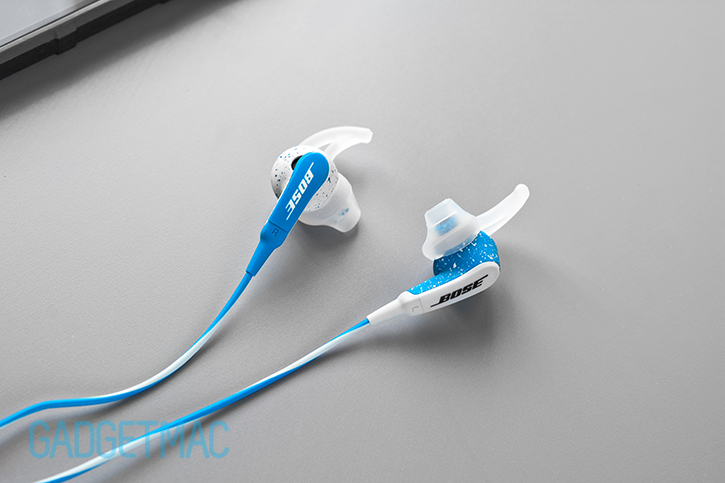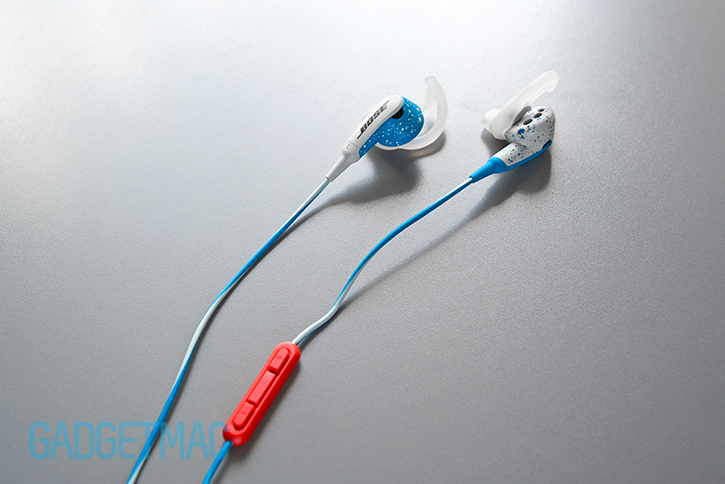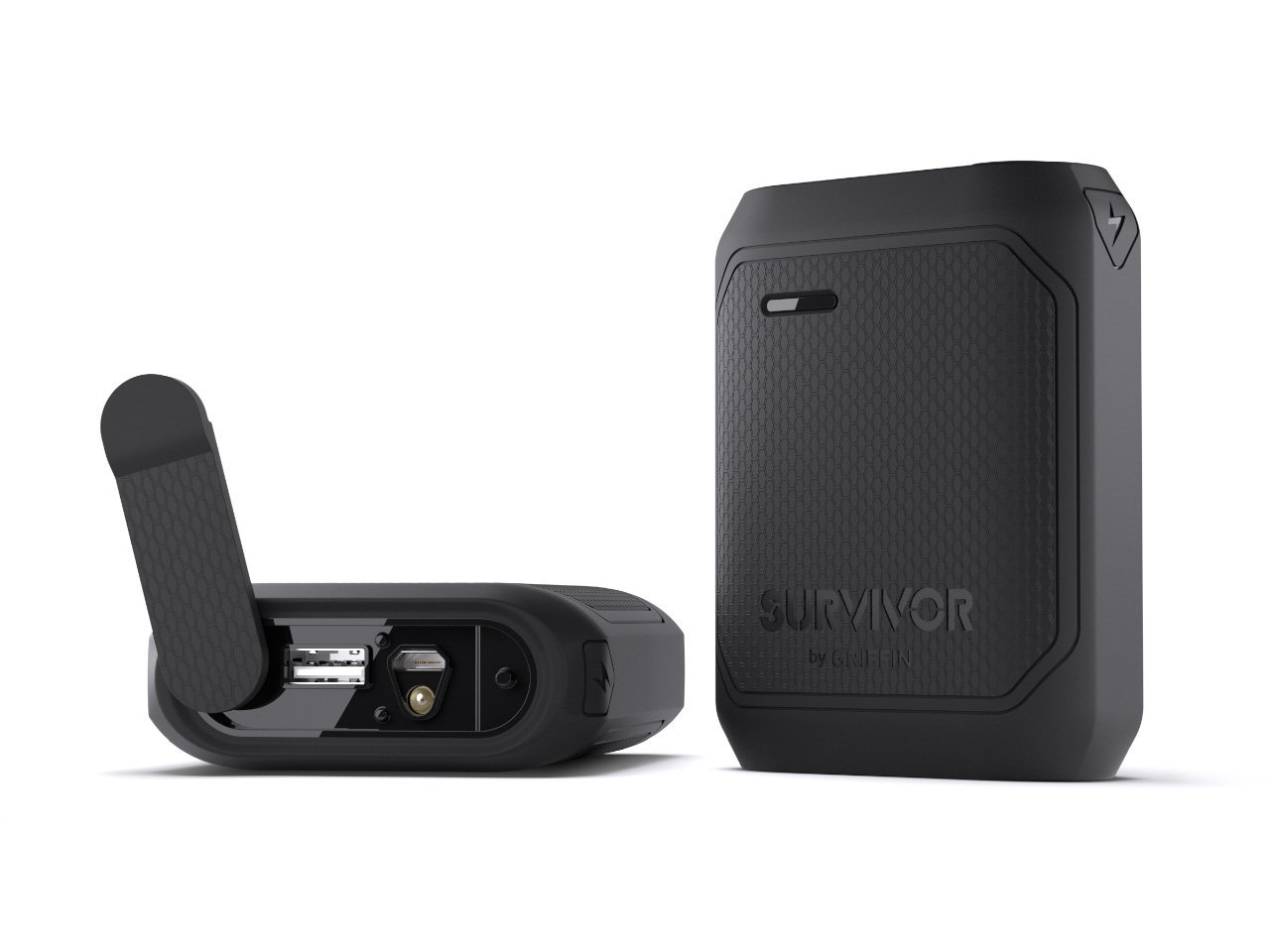Bose FreeStyle In-Ear Headphones Review
/Although it never really disappeared, Bose is back with a new and refreshing line of audio gear designed to be more stylish compared to the company's previous mundane yet iconic products. The newly redesigned SoundTrue series of on-ear and over-ear headphones, which replace Bose's tried and true AE2i model, are being offered in a wide range of color styles and two-tone designs. And then there are the FreeStyle in-ear headphones, Bose's most pretentiously designed headset yet. But don't worry, unlike the SoundTrue they aren't going to be replacing the MIE2i or the SIE2i models anytime soon. Instead, the FreeStyle are an amalgamation of the two. They are Bose's most stylish, sweat-resistant earbuds the company has ever put into mass production. Offered in two acceptably garish yet excitingly different paint jobs, you'll either really like them or won't be able to stand the sight of them. Either way, we have got an in-depth freestyle review for you just a scroll away.
At first glance, the FreeStyle are one arguably attractive looking pair of sporty in-ear headphones. Radically unique and boasting an original style, the FreeStyle were designed in two different quirky styles: a refreshing white and blue splattered Ice Blue and a minty purple Indigo. The Ice Blue FreeStyle earbuds we're testing features a flurry of contrasting paint splatters atop solid white and cyan blue hues reminiscent of various active sports wear. A matching white and blue theme also spirals around the cable with bits of vibrant red accents along the way. The design is energetically fresh, extremely eye-catching and unlike anything we've seen recently. It all looks really cool and quite honestly the single best thing about the FreeStyle as Bose's newly introduced earbud offering.
Putting style aside, we're a bit disappointed to know that Bose hasn't done anything to change the core design or improve things like sound quality and the way these headphones isolate audio in your ears. In other words, the FreeStyle will sound the same as Bose's SIE2i Sport and much older MIE2i models, except for that fact that Bose has moved little details around between the two models in order to make the FreeStyle stand out just a little more.
Hardware wise, the FreeStyle share an identical durable build quality found on the SIE2i Sport, but have the same cable and inline headset remote and mic module found on the grayscale MIE2i. The FreeStyle are also less costly at $130 compared to the $150 asking price of the SEI2i due to the fact that you don't get a Reebok fitness armband for your smartphone or a detachable extension cable. And apart from the obvious difference in plastic surgery, the FreeStyle and SIE2i are identical twins from the inside out. So if you already own Bose's SEI2i or MIE2i, there's no reason for you to upgrade - unless you want to the weather and sweat protection qualities which the FreeStyle afford. By all means, the FreeStyle are Bose's best in-ear headphones yet. So if you need to decide between all three models, we think the FreeStyle offer the most refined design that will be beneficial to both exercise and casual listening usage case scenarios.
Bose packaging is as always, simplistic and easy to unbox. Inside, you'll of course find that the FreeStyle - along with a surprisingly small mount of what Bose calls "StayHear" ear tip selection. In total, there are three identical tips included in multiple sizes: a small and a large-sized pair, while the third medium-sized pair is pre-fitted on the FreeStyle as it will generally fit most people's ears. We'll talk about these StayHear tips in greater detail under the Comfort Level category.
A matching case with a zipper closure is also included to help you keep your FreeStyle protected. The case is made from a combination of two types of materials that follow the FreeStyle's funky clash of contrasting colors and patterns. On one end you've got a synthetic creme leather textured with a pebble-like appearance, while at the bottom a blue nylon fabric is stitched diagonally across the front and back. It's the same exact case Bose includes with its MIE2i and MIE2, only that it has been "freestyled" to be more appealing and stylish. And we do like the looks of it.
But when taking a look at what's inside it, there's nothing but a large empty space lined with fabric. No pockets to organize your tips in or to neatly hold down the cable. You basically just toss your FreeStyle inside and hope that the cable doesn't get caught when you're zippering the case closed. And while we do think the FreeStyle case is one of the most creatively designed travel cases to be included with a pair of in-ears, it's also one of the more cheaply made and unorganized protective headphone cases we've used.
Like the SIE2i, the FreeStyle share an identical all-plastic construction with a subtle textured matte surface finish that is impressive and pleasing. We have nothing bad to say about the build quality as these seem to be made out of a very high quality plastic that is highly durable in that it is sealed and protected against the harshness of sweat and outside weather conditions. Even the dual-toned tangle-free cable is very robust, yet still sprightly in its flexibility.
Generally a metal construction is considered to be premium and superior, however, with this durable and lightweight plastic construction, the FreeStyle are better suited for what they were partly designed for...fitness use. Instead of hearing the hollowness and creaking of cheaply made thin plastic, the FreeStyle's artistically paint-splattered plastic casings emit a reassuring marble-like solid thud when the two touch upon impact. They may not be as seamless as the $100 a-Jays Five, or as remarkably made as the $180 Bowers & Wilkins C5T, but the FreeStyle should never be overlooked when it comes to durability and price. That said, we do think a more appropriate price point for the FreeStyle would be at the $100 mark...all things considered.
Unlike some of their stablemates over at Bose, the FreeStyle feature a pleasing to use and amazingly lightweight inline 3-button remote with a built-in microphone as standard. The FreeStyle's blood red remote module is designed to fully work with Apple's latest iOS devices and shares identical, easy to use tactile buttons and a sleek form factor with the MIE2i mobile headset. It allows you to take control of your music and phone calls with the ability to adjust volume using both the top and bottom buttons, answer/decline/end calls, interact with Siri, as well as play/pause/skip/fast-forward/rewind tracks using the middle multi-function button. The FreeStyle's 3-button remote will also work universally with other non-iOS devices but will be limited in its functionality to only be able to play/pause music, answer/end calls and even control Google Now. Volume controls do not work with Android devices. It is by no means a premiumly built inline remote, yet we found that it has no drawbacks as it is unquestionably a great performer.
Turning the remote over will reveal the built-in microphone, made visible by its large perforated openings that allow to an excellent voice pickup. Whether these fairly large perforations have any significant impact on the way the microphone performs is hard to tell, however, what I can tell you is that this is one of the best sounding microphones we have tested so far. The audio quality during phone calls and general voice recording is phenomenally clear, as it should be. This is one of the very few headset microphones to give Apple's well-established EarPods a run for its money.
It may not be much of a feature, but case users will be happy to know that the FreeStyle's slim and straight, gold-plated audio jack was designed to fit into very tight spaces for that it is compatible with most protective tablet and smartphone cases.
A cable clip let's you attach the upper part of the FreeStyle's cable to your clothing in order to keep the inline remote and mic steady from swinging when you're running. The cable is a relatively short one, perfect in portable usage case scenarios, and maybe not ideal if you’re planning to sit at your desk with your computer situated far away from where you sit as the cable will not be long enough to reach more than an arms length.
If you know anything about Bose’s in-ear headphones it's that they aren’t actually in-ear headphones, meaning they are more like earbuds which sit outside your ear canal just like Apple’s EarPods. These type of earbuds don’t offer any isolation or the seal that you often look for when wearing ordinary in-ear headphones as they merely rest comfortably in the bowl part of your ear. So instead of plugging your ear holes, the FreeStyle politely sit near the entry way where they feel like you aren’t wearing them correctly. As you get used to the lack of isolation, the FreeStyle will feel almost like they’re floating lightly near your ear canals. That sense of an open-air wearing style puts less tension and stress on your ears affording you more comfort and prolong listening experience.
Although the FreeStyle's StayHear tips don't secure themselves into your ear canals with a tight snug fit like ordinary round in-ear tips, they do rely on the seamlessly integrated wing stabilizers to handle the task of providing a proper secure fit. The semi-clear wing tips are made from a very soft, flexible and forgiving silicone material designed to fit underneath the ridge of you ear where they help lock the FreeStyle buds securely in place. You'll hardly feel the wing tips as they are very soft and put no noticeable pressure against your ear, yet they do their job extremely well in that they ensure the earbuds stay in place even when you're running and moving your head often.
If you've ever used those earbuds you get with your iPod or iPhone such as more recently Apple's EarPods, you'll know that just like the FreeStyle, they don't offer any noise isolation which is why a lot of people prefer to use them as fitness earbuds with headset functionality. But there's one huge difference between EarPods and Bose's FreeStyle - and that has to do with the level of secure in-ear fitting and stability during physical activities. Also, if you'll notice the FreeStyle's silicone tips are shaped in such a way so that the penetrate deeper into the ear canal compared to the EarPods' shallower design, and that amongst other things gives the FreeStyle an improved, fuller sound in comparison.
It’s important to note that when you’re wearing the FreeStyle, or any one of Bose’s current “in-ear” headphones, you’ll be able to hear everything around you as if you weren’t wearing headphones at all. You can literally pick up your home phone and talk without having to remove the FreeStyle from your ear. That’s just how much they don’t impede on your natural hearing ability. This will either be a good thing or a bad thing depending on your personal preference. If you’re riding a bike and still be required to hear the traffic or whatever it is that you don’t want to isolate from your awareness whilst listening to music and chatting over the phone with someone, then these will obviously be your ideal type of headphones to use during those situations. But if you’re looking to block out distracting background noise, the hustle and bustle of people talking when you’re commuting in public or private transportation, these aren’t for you.
For someone who is used to wearing in-ear headphones that offer noise isolation, it would seem at first that what you’re hearing whilst wearing the FreeStyle is being broadcasted to everyone around you due to the lack of isolation, when in fact nothing that you’re listening to will be audible to people near you. In other words there’s no audio bleed at near and above normal volume.
We'd usually tell you to get some Comply foam tips to enhance your listening experience, isolation and comfort. But unfortunately Bose designed a unique and proprietary ear tip connection for its silicone StayHear tips, and because of that there aren't any third party tips made available for the FreeStyle or any other Bose earbuds for that matter.
Typically when you go and buy a pair of headphones or in-ear headphones you expect them to sound acoustically isolated as if you just put a mini recording studio over your ears. We usually strive to achieve the best possible seal in order to isolate our music inside our head while also improving the tonal sound performance and richness. But in this case, the FreeStyle solve a different kind of need. The same need that open-back headphones afford (namely audiophile-grade headphones such as the Sennheiser HD 558), which is the ability to hear everything that is around you. And like all Bose earbuds, the FreeStyle are engineered to offer its user an airy audio experience that sounds crystal clear and life-like. In-ear headphones with an open-air design such as the FreeStyle are hard to come by compared to larger on-ear and over-ear headphones, and that to me is unusual considering a lot of people who use headphones when they're riding or running outdoors use in-ear style headphones.
Those so-called “deep lows” Bose promised you when you sat there reading the product highlights are sadly nothing but a marketing myth. While the FreeStyle outputs very clean and clear highs and a fairly decent sounding midrange, they aren’t as pronounced and detailed as they are when listening to the same track with a tight seal-style in-ear headphones like the a-Jays Five. The difference between richness, detail, foreground clarity and heavier bass response is also apparent and inferior due to the lack of sound isolation when using the FreeStyle. That said, they still deliver a very likable sound signature despite not having a rich audio quality as some other similarly priced in-ear headphones including the Jabra Rox Wireless we recently reviewed. And if you’re willing to trade punchier lows and warmth for extra safety being able to hear your surroundings, then by all means pick up a pair of FreeStyles. You won’t be disappointed coming in knowing what to expect...that we know for sure.
Bose's TriPort technology enables the FreeStyle to breathe using these three large openings in order to deliver a more natural sound finish as well as a sense of a wide soundstage. And that can be heared when using the FreeStyle indeed. Bose also promised that its TriPort technology would deliver deeper sounding lows. Unfortunately, without a tight seal you end up losing those engaging bass notes. Whether that is good or bad will depend on your preference. To say that I did not enjoy using the FreeStyle would be untrue. But I was disappointed to find the bass struggling in the distance, just waiting for a break to shine through – only to never truly thump. Constricted by its very own maker, the proprietary desolating Bose ear tips.
Bose's FreeStyle are more of the same wrapped in a new quirky skin. But to sum things up more appropriately, the FreeStyle are merely a special edition of a pre-existing headset variant made by Bose. And if you aren't looking to block annoying people and other distracting background noises and be left all alone and isolated with your music, then there's no question these in-ear headphones were made just for you. When you can't afford to detach yourself from the outside environment as it may be extremely dangerous in certain situations, Bose's specially designed ear tips along with their TriPort technology deliver an airy and wide-open audio quality whilst keeping you attached to your surrounding environment. If it came down to spending my own money, I'd have to pick the a-Jays Five over the FreeStyle purely because they sound better and provide the isolation that I much prefer.
We definitely recommend the FreeStyle for active use as they are superb performers when it comes to moisture durability, secure comfortable fit and fantastically clear and open audio quality experience. Otherwise, we wouldn’t go as far as to recommend them to most casual listeners as there are far better alternatives out for the picking.






















































